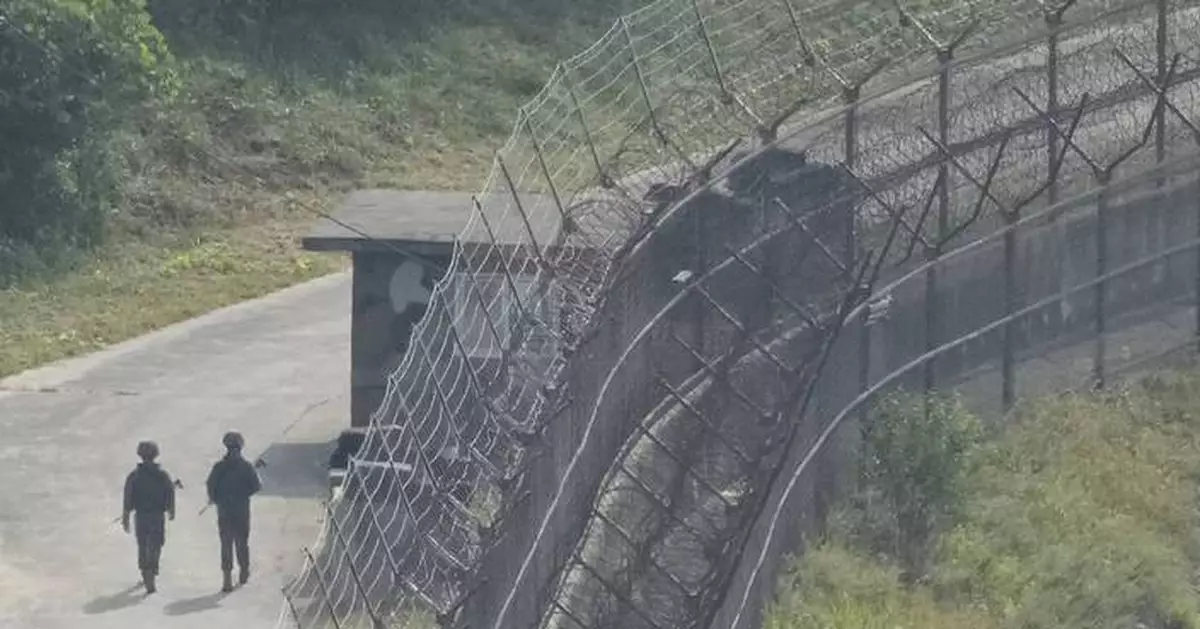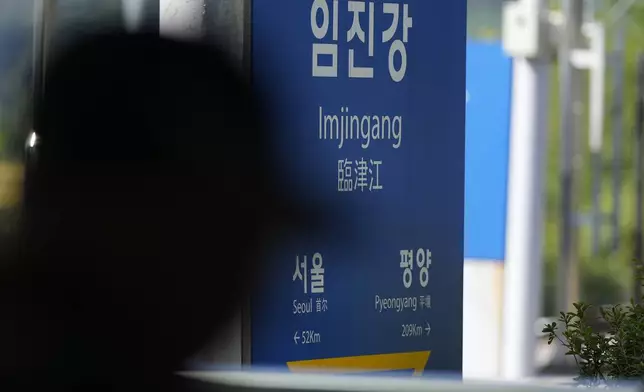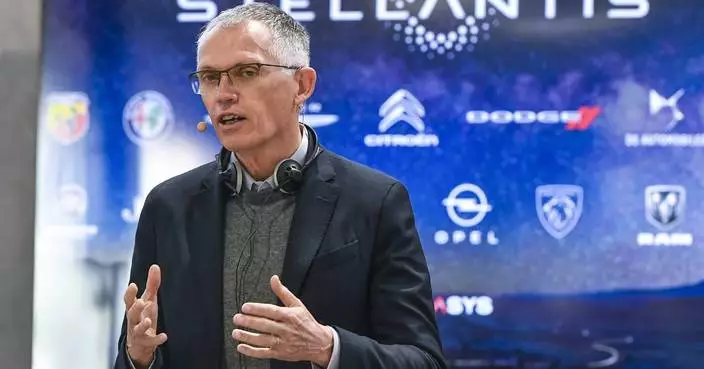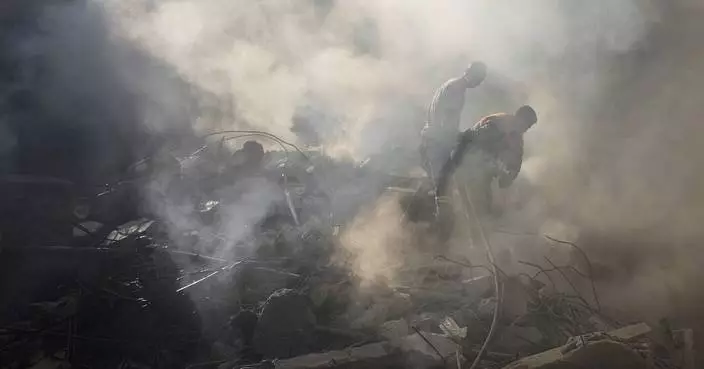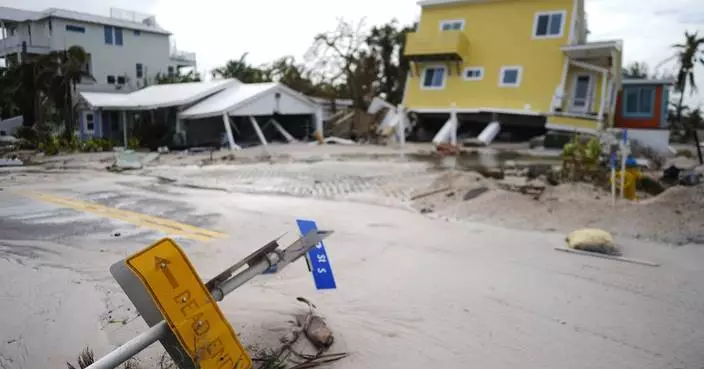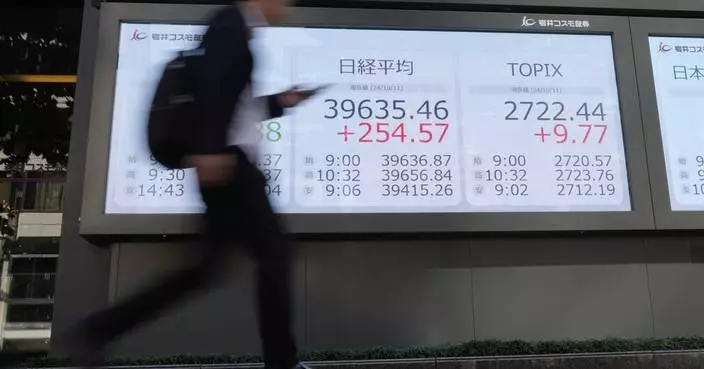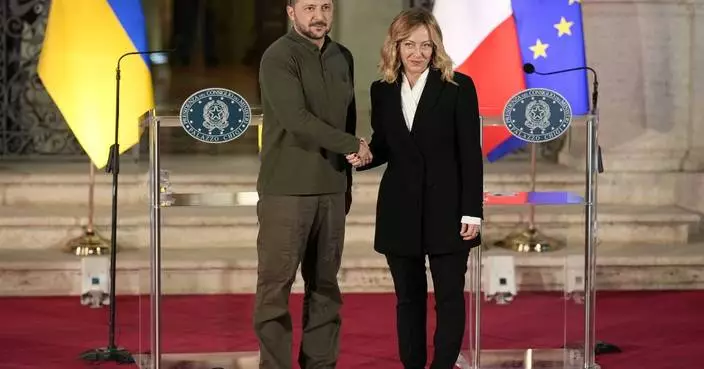SEOUL, South Korea (AP) — North Korea has accused rival South Korea of flying drones to its capital to drop anti-North Korean propaganda leaflets and threatened to respond with force if such flights occur again. South Korea issued a vague denial of the allegation.
North Korea’s Foreign Ministry said in a statement Friday that South Korean drones were detected in the night skies of Pyongyang on Oct. 3 and Wednesday and Thursday this week.
Click to Gallery
A visitor walks past near a signboard showing the distance to North Korea's capital Pyongyang and to South Korea's capital Seoul from Imjingang Station in Paju, South Korea, Wednesday, Oct. 9, 2024. (AP Photo/Lee Jin-man)
A North Korean flag flutters in the wind atop a 160-meter (525-foot) tower in the North's Kijong-dong village near the truce village of Panmunjom, seen from Paju, South Korea, near the border with North Korea, Wednesday, Oct. 9, 2024. (AP Photo/Lee Jin-man)
A North Korean military guard post, top, and South Korean army soldiers, bottom, are seen from Paju, South Korea, near the border with North Korea, Thursday, Oct. 10, 2024. (AP Photo/Ahn Young-joon)
North Korean soldiers work at the North's military guard post as a North Korean flag flutters in the wind, are seen from Paju, South Korea, near the border with North Korea, Thursday, Oct. 10, 2024. (AP Photo/Ahn Young-joon)
South Korean army soldiers patrol along the barbed-wire fence in Paju, South Korea, near the border with North Korea, Thursday, Oct. 10, 2024. (AP Photo/Ahn Young-joon)
The ministry accused the South of violating North Korea’s “sacred” sovereignty and threatening its security, and described the alleged flights as a “dangerous provocation” that could escalate to an armed conflict and even war.
It said North Korean forces will prepare “all means of attack” capable of destroying the southern side of the border and the South Korean military, and respond without warning if South Korean drones are detected in its territory again.
“The safety lock on our trigger has now been released,” the ministry said. “We will be prepared for everything and will be watching. The criminals should no longer gamble with the lives of their citizens.”
Asked about the North Korean claims during a parliamentary hearing, South Korean Defense Minister Kim Yong-hyun told lawmakers, “We have not done that.” He said he was still trying to assess the situation and didn’t elaborate further.
It wasn’t immediately clear whether Kim was referring to South Korean military drones, or also drones possibly operated by South Korean civilians.
The South’s Joint Chiefs of Staff later said in a statement that it couldn’t confirm whether the North’s claims were true, without elaborating why. The joint chiefs warned the North to “exercise restraint and not act recklessly.”
“If the safety of our citizens is threatened in any way, our military will respond with stern and thorough retaliation,” it said.
North Korea is extremely sensitive to any outside criticism of the authoritarian government of leader Kim Jong Un and his family’s dynastic rule over the country.
Since May, North Korea has sent thousands of balloons carrying paper waste, plastic and other trash to drop on the South, in what it described as retaliation against South Korean civilian activists who flew balloons with anti-North Korean propaganda leaflets across the border. South Korea’s joint chiefs said in a separate statement that the North was again flying balloons toward the South Friday evening and warned civilians to beware of objects falling from the sky.
South Korea’s military responded to the North’s balloon campaign by using border loudspeakers to broadcast propaganda and K-pop to North Korea.
The psychological warfare campaigns have further escalated tensions created by Kim’s weapons tests and verbal threats of nuclear conflict against Washington and Seoul. The allies have responded by strengthening their combined military exercises and expanding three-way cooperation with Japan, while also upgrading nuclear deterrence plans built around U.S. strategic assets.
On Wednesday, North Korea said it will permanently block its border with South Korea and build front-line defense structures to cope with “confrontational hysteria” by South Korean and U.S. forces.
North Korea’s military said in a statement on state media that it will “completely cut off roads and railways” linked to South Korea and “fortify the relevant areas of our side with strong defense structures.”
North Korea called its steps a “self-defensive measure for inhibiting war and defending the security” of the country and accused its rivals of “getting ever more reckless in their confrontational hysteria.” North Korea cited what it called various military exercises in South Korea, the deployment of U.S. strategic assets and its rivals’ harsh rhetoric.
Experts say Kim’s nuclear push is aimed at eventually forcing the United States to accept North Korea as a nuclear power and allowing the North to negotiate security and economic concessions from a position of strength.
In written answers to questions by The Associated Press this month, South Korean President Yoon Suk Yeol said North Korea will likely stage major provocations such as a nuclear test explosion or an intercontinental ballistic missile test around the U.S. presidential election in November to grab Washington’s attention.
Yoon also condemned North Korea over its balloon campaign and warned that it “will face consequences that it will find difficult to withstand” if its balloon activities jeopardize the safety of South Korean people. He didn’t elaborate on what steps his government was considering.
Associated Press writer Hyung-jin Kim contributed to this report.

A visitor walks past near a signboard showing the distance to North Korea's capital Pyongyang and to South Korea's capital Seoul from Imjingang Station in Paju, South Korea, Wednesday, Oct. 9, 2024. (AP Photo/Lee Jin-man)
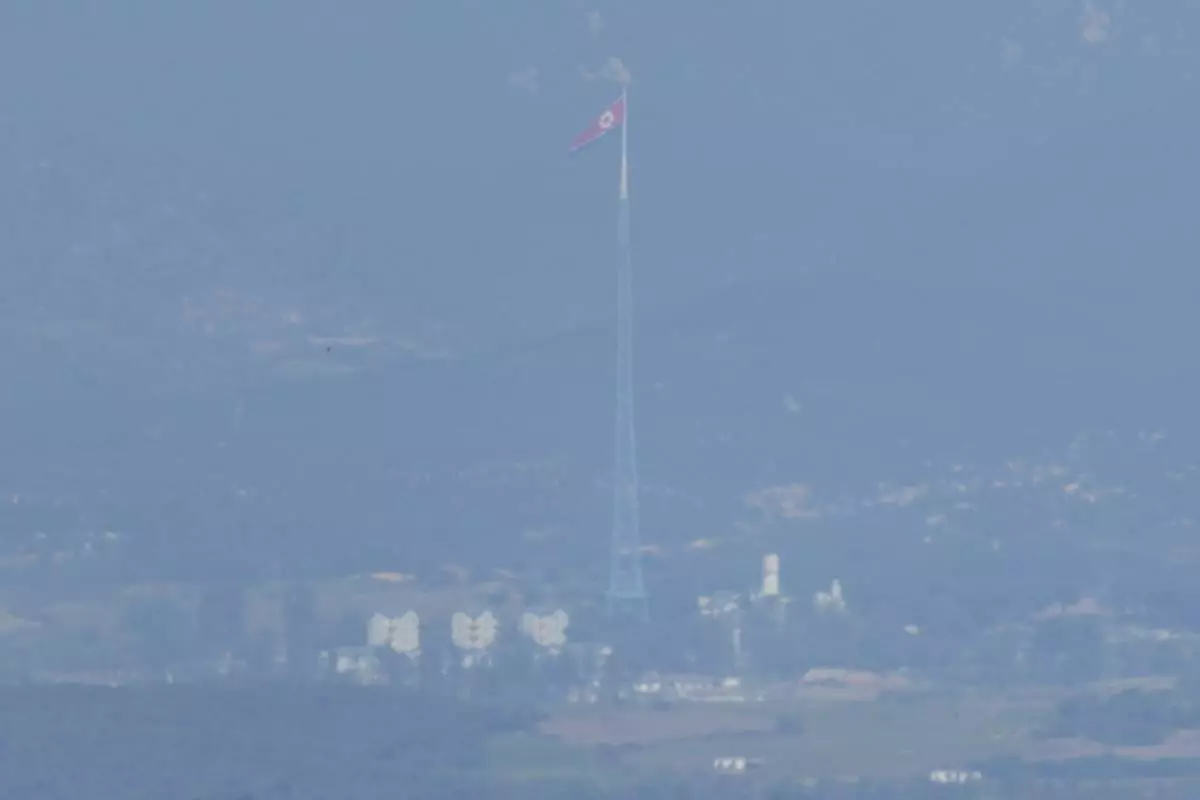
A North Korean flag flutters in the wind atop a 160-meter (525-foot) tower in the North's Kijong-dong village near the truce village of Panmunjom, seen from Paju, South Korea, near the border with North Korea, Wednesday, Oct. 9, 2024. (AP Photo/Lee Jin-man)
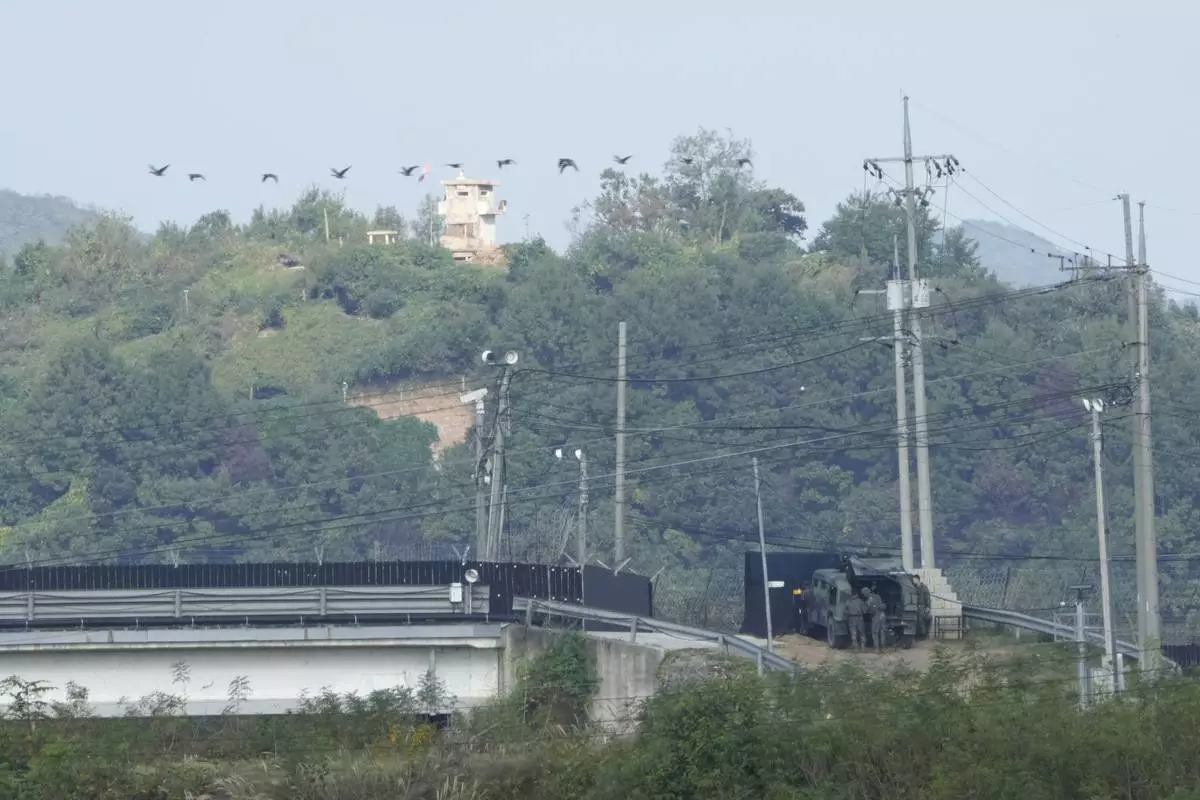
A North Korean military guard post, top, and South Korean army soldiers, bottom, are seen from Paju, South Korea, near the border with North Korea, Thursday, Oct. 10, 2024. (AP Photo/Ahn Young-joon)
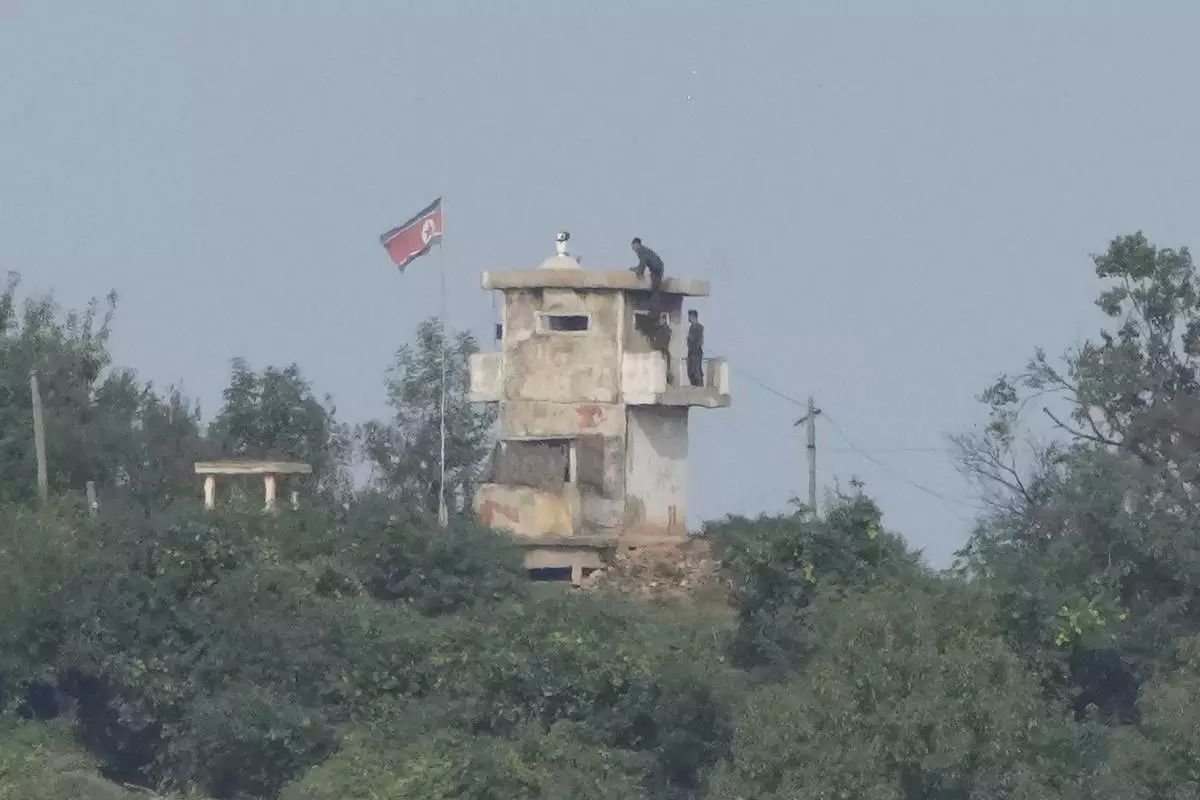
North Korean soldiers work at the North's military guard post as a North Korean flag flutters in the wind, are seen from Paju, South Korea, near the border with North Korea, Thursday, Oct. 10, 2024. (AP Photo/Ahn Young-joon)
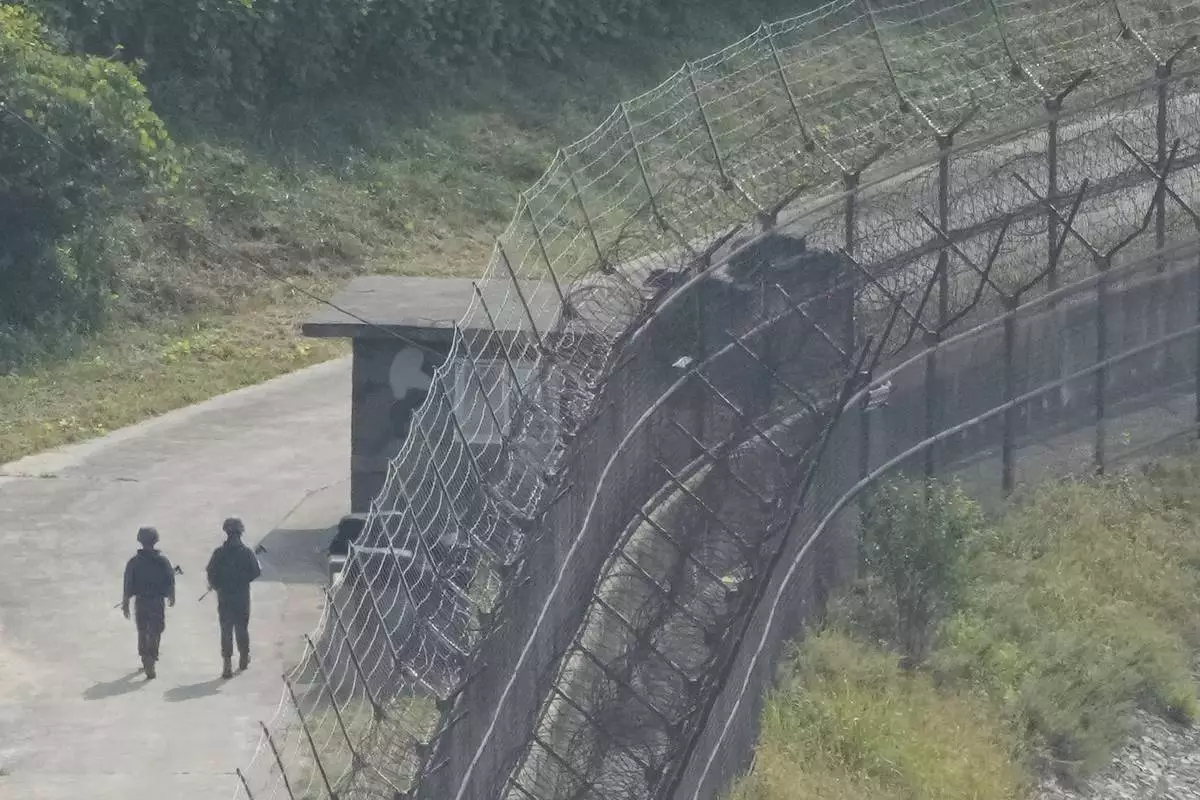
South Korean army soldiers patrol along the barbed-wire fence in Paju, South Korea, near the border with North Korea, Thursday, Oct. 10, 2024. (AP Photo/Ahn Young-joon)
LOS ANGELES (AP) — Tesla unveiled its long-awaited robotaxi at a Hollywood studio Thursday night, though fans of the electric vehicle maker will have to wait until at least 2026 before they are available.
CEO Elon Musk pulled up to a stage at the Warner Bros. studio lot in one of the company's “Cybercabs," telling the crowd that the sleek, AI-powered vehicles don't have steering wheels or pedals. He also expressed confidence in the progress the company has made on autonomous driving technology that makes it possible for vehicles to drive without human intervention.
Tesla began selling the software, which is called “Full Self-Driving,” nine years ago. But there are doubts about its reliability.
“We’ll move from supervised Full Self-Driving to unsupervised Full Self-Driving. where you can fall asleep and wake up at your destination,” he said. "It’s going to be a glorious future.”
Tesla expects the Cybercabs to cost under $30,000, Musk said. He estimated that the vehicles would become available in 2026, then added “before 2027.”
The company also expects to make the Full Self-Driving technology available on its popular Model 3 and Model Y vehicles in Texas and California next year.
“If they’re going to eventually get to robotaxis, they first need to have success with the unsupervised FSD at the current lineup,” said Seth Goldstein, equity strategist at Morningstar Research. “Tonight’s event showed that they're ready to take that step forward.”
When Tesla will actually take that step, however, has led to more than a little anxiety for investors who see other automakers deploying similar technology right now. Shares of Tesla Inc. tumbled almost 7% before the opening bell Friday.
Waymo, the autonomous vehicle unit of Alphabet Inc., is carrying passengers in vehicles without human safety drivers in Phoenix and other areas. General Motors’ Cruise self-driving unit had been running robotaxis in San Francisco until a crash last year involving one of its vehicles.
Also, Aurora Innovation said it will start hauling freight in fully autonomous semis on Texas freeways by year’s end. Another autonomous semi company, Gatik, plans to haul freight autonomously by the end of 2025.
“Tesla yet again claimed it is a year or two away from actual automated driving -- just as the company has been claiming for a decade. Indeed, Tesla’s whole event had a 2014 vibe, except that in 2014 there were no automated vehicles actually deployed on public roads,” Bryant Walker Smith, a University of South Carolina law professor who studies automated vehicles, told The Associated Press in an email. “Now there are real AVs carrying real people on real roads, but none of those vehicles are Teslas. Tonight did not change this reality; it only made the irony more glaring.”
Tesla had 20 or so Cybercabs on hand and offered event attendees the opportunity to take rides inside the movie studio lot — not on Los Angeles' roads.
At the presentation, which was dubbed “We, Robot” and was streamed live on Tesla’s website and X, Musk also revealed a sleek minibus-looking vehicle that, like the Cybercab, would be self-driving and can carry up to 20 passengers.
The company also trotted out several of its black and white Optimus humanoid robots, which walked a few feet from the attendees before showing off dance moves in a futuristic-looking gazebo.
Musk estimated that the robots would cost between $28,000-$30,000 and would be able to babysit, mow lawns, fetch groceries, among other tasks.
“Whatever you can think of, it will do,” he said.
The unveiling of the Cybercab comes as Musk tries to persuade investors that his company is more about artificial intelligence and robotics as it labors to sell its core products, an aging lineup of electric vehicles.
Tesla’s model lineup is struggling and isn’t likely to be refreshed until late next year at the earliest, TD Cowen analyst Jeff Osborne wrote in a research note last week.
Osborne also noted that, in TD Cowen’s view, the “politicization of Elon” is tarnishing the Tesla brand among Democrat buyers in the U.S.
Musk has endorsed Republican presidential candidate Donald Trump and has pushed many conservative causes. Last weekend he joined Trump at a Pennsylvania rally.
Musk has been saying for more than five years that a fleet of robotaxis is near, allowing Tesla owners to make money by having their cars carry passengers while they’re not in use by the owners. Musk said that Tesla owners will be able to put their cars into service on a company robotaxi network.
But he has acknowledged that past predictions for the use of autonomous driving proved too optimistic. In 2019, he promised the fleet of autonomous vehicles by the end of 2020.
The announcement comes as U.S. safety regulators are investigating Full Self Driving and Autopilot based on evidence that it has a weak system for making sure human drivers pay attention.
In addition, the U.S. National Highway Traffic Safety Administration forced Tesla to recall Full Self-Driving in February because it allowed speeding and violated other traffic laws, especially near intersections. Tesla was to fix the problems with an online software update.
Last April in Snohomish County, Washington, near Seattle, a Tesla using Full Self-Driving hit and killed a motorcyclist, authorities said. The Tesla driver told authorities that he was using the system while looking at his phone when the car rear-ended the motorcyclist. The motorcyclist was pronounced dead at the scene, authorities said.
NHTSA says it’s evaluating information on the fatal crash from Tesla and law enforcement officials.
The Justice Department also has sought information from Tesla about Full Self-Driving and Autopilot, as well as other items.
Krisher reported from Detroit.
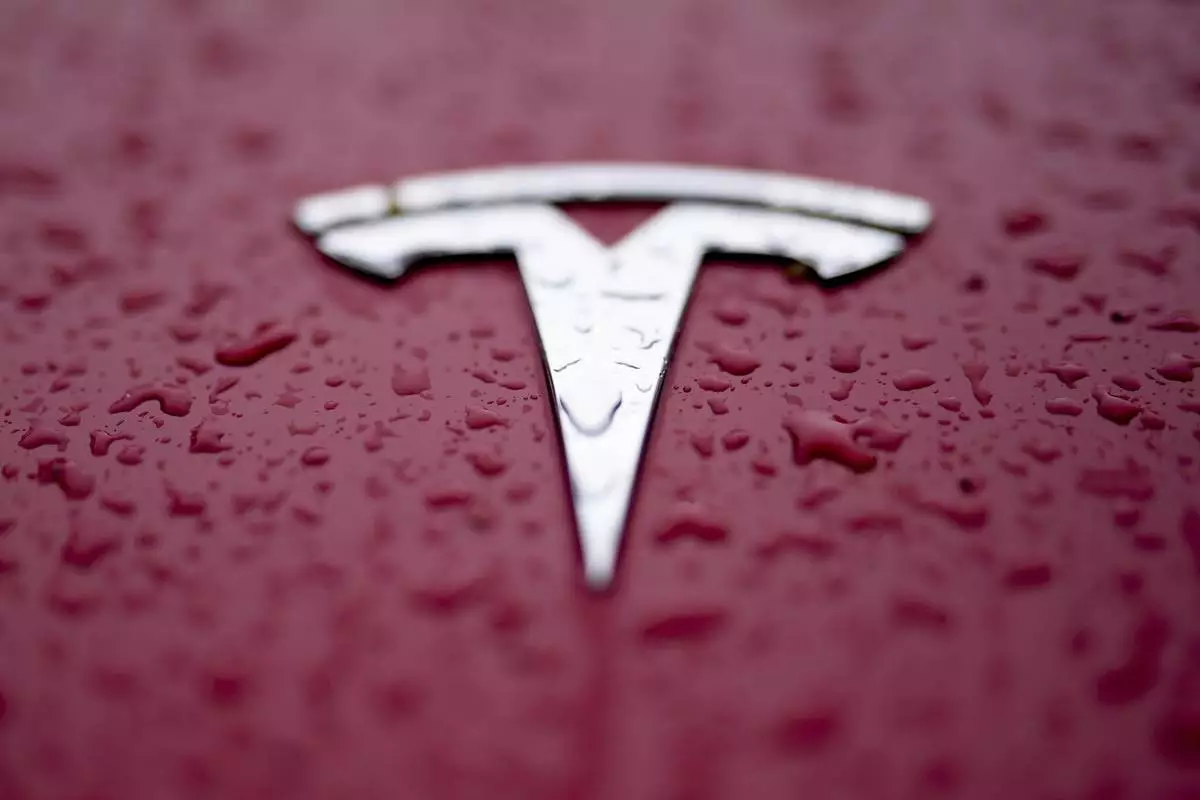
FILE - A Tesla logo is shown on Feb. 27, 2024, in Charlotte, N.C. (AP Photo/Chris Carlson, File)







